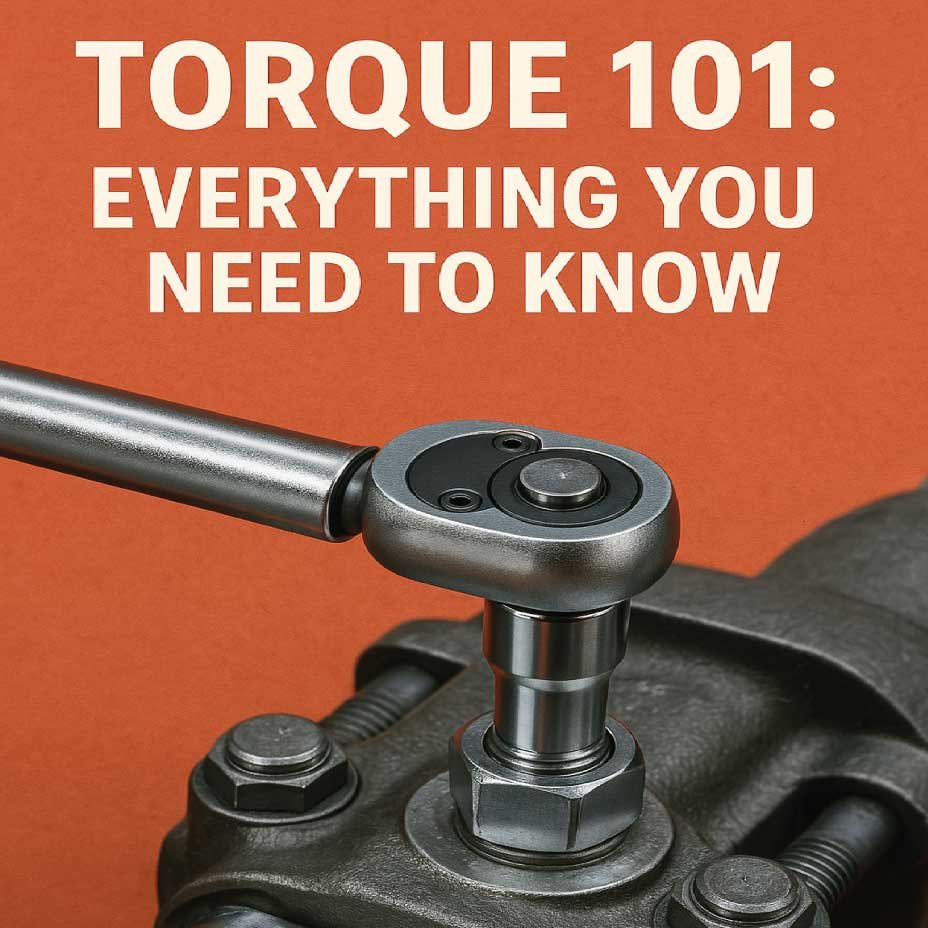When we hear the term “torque,” we often think about powerful engines, spinning wheels, or maybe even tools like wrenches. But what exactly is torque, and why is it so important in mechanics, engineering, and even everyday life? Let’s break it down step-by-step in this beginner-friendly guide: Torque 101.
What Is Torque?
Torque is the measure of rotational force. It tells us how much force is being applied to rotate an object around an axis. Simply put, torque makes things turn. From tightening bolts to turning a car’s wheels or opening a door, torque is always at work.
In physics, torque is often described as the tendency of a force to cause rotation.
The Basic Definition
The technical definition of torque is:
Torque = Force × Distance from the axis of rotation
This distance is also called the moment arm or lever arm.
So, if you apply a force of 10 Newtons to a wrench that is 0.5 meters long, the torque is:
10 N × 0.5 m = 5 Newton-meters (Nm)
Also Read:
Units of Torque
In the SI (metric) system, torque is measured in Newton-meters (Nm).
In the Imperial system, it’s measured in pound-feet (lb-ft) or sometimes inch-pounds (in-lb).
Both units represent the same thing: a force applied at a certain distance to create rotation.
Real-Life Examples of Torque
To better understand torque, let’s look at some practical examples:
1. Opening a Door
When you push a door near its hinge, it barely moves. But when you push at the handle, which is far from the hinge, it opens easily. Why? Because torque increases as the distance from the axis increases.
2. Using a Wrench
The longer the wrench, the more torque you can apply with the same amount of force. Mechanics often use longer wrenches to loosen tight bolts. This is the reason tools are designed with torque in mind.
3. Cars and Engines
In vehicles, torque is the force that turns the wheels. Cars with high torque can accelerate faster and tow heavier loads. Trucks and SUVs often advertise high torque because it means more pulling power.
The Formula for Torque
Here’s the standard torque formula:
τ = r × F × sin(θ)
Where:
τ (tau) = torque
r = distance from the pivot point (lever arm)
F = force applied
θ = angle between the force and lever arm
If the force is applied perpendicular to the lever arm, sin(θ) = 1, and the formula simplifies to:
Torque = Force × Distance
Types of Torque
There are a few types of torque depending on how and where it’s applied:
1. Static Torque
This is the torque that doesn’t cause rotation, like tightening a stationary bolt.
2. Dynamic Torque
This is torque that involves motion, such as the rotating crankshaft in a car engine.
3. Braking Torque
The torque that resists rotation, such as when brakes slow down a vehicle.
Torque vs Horsepower: What’s the Difference?
Many people confuse torque with horsepower. While both are related to engines, they measure different things:
Torque is the twisting force.
Horsepower is the rate at which work is done.
Think of torque as strength, and horsepower as how fast you can use that strength.
For example, a tractor has high torque but low horsepower, while a sports bike has high horsepower but lower torque.
Why Torque Matters in Engineering
In mechanical design, torque is critical for choosing motors, designing tools, building bridges, or calculating how parts will rotate or resist rotation.
For instance:
In robots, engineers must calculate the torque needed to rotate arms or wheels.
In machinery, choosing the correct motor torque prevents overload or failure.
In construction, torque ensures that bolts and fasteners are tightened correctly to prevent collapse.
Measuring Torque
To measure torque, professionals use a torque wrench. These tools ensure that bolts and nuts are tightened to a specific torque value.
For larger systems like engines or motors, more advanced devices like torque sensors or dynamometers are used.
Torque in Tools and Machines
Many tools are rated based on the amount of torque they can deliver. For example:
Cordless drills often advertise torque values (e.g., 400 in-lbs).
Impact wrenches are used in car garages to apply high torque for loosening/tightening lug nuts.
Torque screwdrivers are used in electronics where delicate torque control is needed.
Torque in Vehicles
Let’s go deeper into torque in vehicles:
Low-end torque helps cars start moving from a stop.
High-end torque helps with high-speed driving or overtaking.
When people say, “this car has more torque,” they usually mean the engine produces more rotational force, which can mean faster acceleration or better towing capacity.
Manufacturers often list peak torque and the RPM (revolutions per minute) at which it’s produced. A flatter torque curve means the car delivers consistent performance across speeds.
Torque and Gear Ratios
Gears in cars and machines multiply or reduce torque.
Lower gears (1st, 2nd) increase torque at the wheels – good for starting or climbing.
Higher gears (5th, 6th) reduce torque but increase speed.
Gearboxes are designed to balance torque and speed depending on what’s needed.
Common Misconceptions
Let’s bust some torque myths:
Torque is not speed – you can have lots of torque and still move slowly.
Bigger doesn’t always mean more torque – efficiency and design matter too.
Torque is not just for cars – it affects everything from wind turbines to bicycles to power tools.
Conclusion
Torque is one of the most important concepts in both physics and engineering. It’s what makes things rotate, twist, and turn. Whether you’re a mechanic, engineer, student, or simply someone curious about how things work, understanding torque gives you deeper insight into the physical world around you.
From a spinning fan blade to a giant truck hauling cargo, torque is always behind the movement. And now, with this Torque 101 guide, you know exactly what it is and why it matters.
Also Read:

